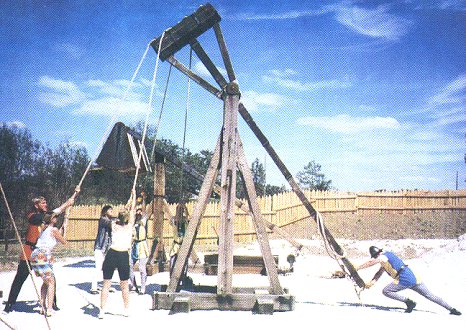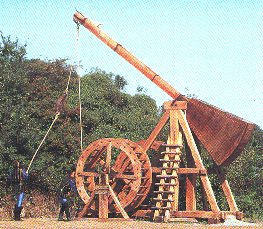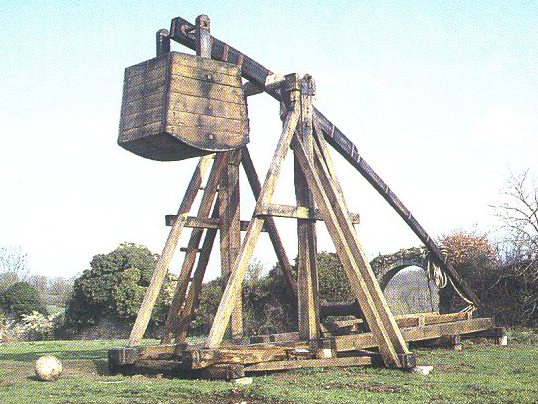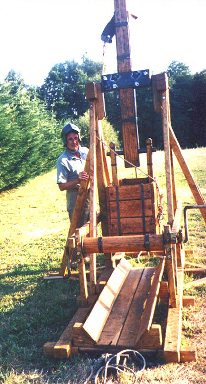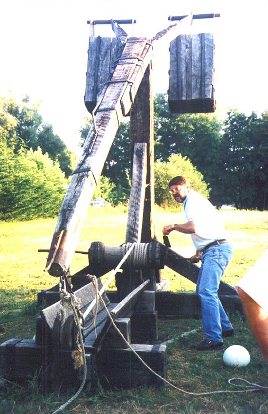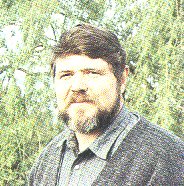Balance Throwing, Siege Machines of the Middle Ages
This page contains images of reconstructed rotating-beam throwing engines that were unique to the Middle Ages. No original machines remain. The machines on this page were constructed by ARMEDIEVAL and are located at French châteaux. For several years ARMEDIEVAL has been constructing these machines as closely as possible to the original medieval specifications and as safe operation permits. ARMEDIEVAL siege engines now conduct firing demonstrations in Scotland and other locations in Europe, as well as at many locations in France other than those identified on this page.
|
Bricole
Man-powered (traction), balance type, stone-throwing machine (Pierriere). The bricole could fire 3 to 4 shots per minute. Projectiles weighing 5 to 10 Kg could be thrown a distance of 50 meters. This reconstruction is located at château de Saint-Brisson (Centre-Val de Loire, France). During the summer, there are scheduled firing demonstrations of the various reconstructed medieval war machines at the château (original date from the twelfth century), which is also a museum. |
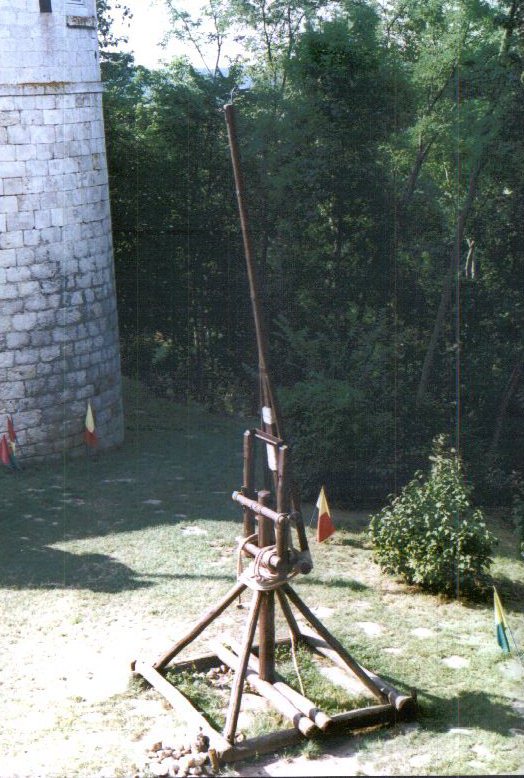
| |||
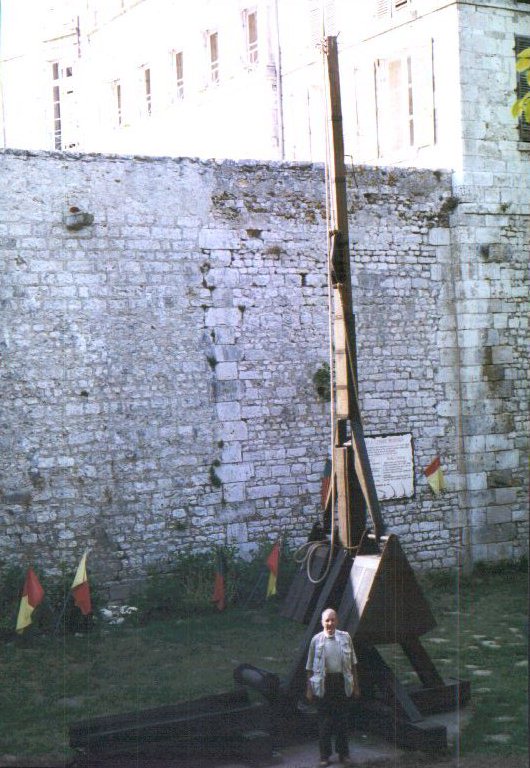
|
Couillard or Biffa Counterweight (gravity-powered) balance engine with two hutches for the weights. The two smaller hutches permited easier transport and assembly. This engine is also at château de Saint-Brisson. While many will call this a 'trebuchet', one of the leading authroities and builder this machine, M. Renaud Beffeyete, labels it as shown here. The two initial images shown here were photographed on location by the webpage author in 1995. | |||
| ||||
| ||||
|
Trebuchet
The counterweight trebuchet (trébuchet contrepoids), balance type, throwing machine with suspended swinging hutch, was the most powerful of the medieval war machines. The reconstructed trebuchet shown here was made by M. Renaud Beffeyte and can throw about a hundred pounds over a distance of 200 meters. This reconstruction was photographed by the webpage author in 1998, at château Castelnaud (Dordogne, France). The château is also an exceptionally fine museum of medieval military items. Note the Bricole (Pierriere), at a distance, on the walls of the fortress. |
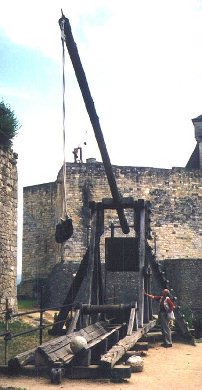
| |||
